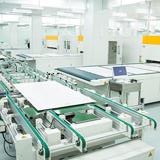

Screen printing refers to a printed text carrier used to transfer ink onto a substrate. The screen printing machine must first copy the original on the screen before printing, fix the printing plate on the screen printing machine, and then transfer the printing plate image and text to the surface of the substrate through Xu Li and pressure, so that the printing plate picture and text Can be transferred to the surface of the substrate. The screen is also referred to as the model used in the printing process. Also called the printing plate.
The preparation of the plate to produce the impact net is a step in the screen printing process and an important step. If the screen selection is not suitable, you can't print well. The screen printer should select the appropriate screen printer to copy the original color of the original.
Screen printing is widely used to meet different quality requirements. Modern screen systems can produce a wide variety of artwork, but they must be chosen appropriately. If you do not use and operate correctly, even a better version of the system will fail.
The printed portion and the blank portion of the screen printing machine are different in relative position and structure, and can be classified into a letterpress, a photolithography, a gravure and a stencil. A plate having a printed portion higher than a blank portion is referred to as a letterpress; a plate having a printing portion on a substantially same plane as a blank portion is referred to as photolithography; a plate having a printed portion lower than a blank portion is referred to as a gravure; Under printing pressure, the ink can be transferred to the underlying printing plate by a printing plate, called a stencil.
The main factors affecting the screen making are: the influence of the banding net, the influence of the printing plate, the influence of the wire angle and the influence of the multi-color cover. The wire direction is the same, the tight mesh, the longitude and the weft should be perpendicular to each other. Otherwise, the thickness of the ink film corresponding to the irregularity of the screen will be uneven; the edge of the printed text will also be unsmooth.
The uniformity of tension is to ensure the uniformity of the tension of the screen, to maintain the relative stability of the image of the layout, and to prevent image distortion and uneven thickness of the ink film during printing. When wrapping, in order to ensure uniform tension of the screen, the tension of each mesh must be equal and opposite. Good screens, screen printers often find that the screen will become loose after long-term placement.
There are many methods for plate making, but each has its own advantages and disadvantages. The current plate making method in China is mainly the indirect method of photosensitive plate making. It utilizes the chemical change of the photosensitive paste, that is, the photosensitive paste is cross-linked and hardened by the light portion, and is closely combined with the screen to form a plate film, and the insensitive portion is washed by water or other developing solution to form a through-hole to form a screen printing plate.
Tel:15158365810
HTML:www.mysyqc.com
Add:No.185, bridge 3 road, xiaoqiaotou village, qiaotou town, cixi city